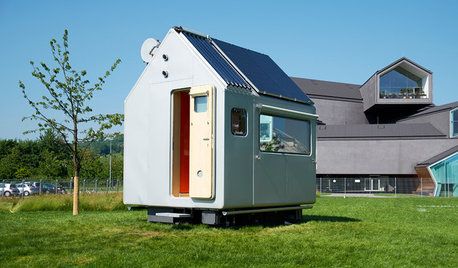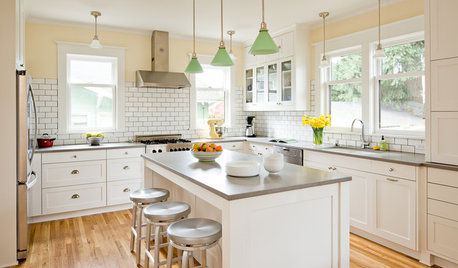Selling micro greens
AmandaCims
12 years ago
Related Stories

MODERN ARCHITECTUREThe Gable Goes Mobile, Micro and Mod
Three ingenious tiny homes feature the familiar peaked roof in unexpected ways
Full Story
DECORATING GUIDESStage Your Home and Sell it Fast
11 ways to prep your house for more offers and a quicker sale
Full Story
SELLING YOUR HOUSEThe Latest Info on Renovating Your Home to Sell
Pro advice about where to put your remodeling dollars for success in selling your home
Full Story
SELLING YOUR HOUSESell Your Home Fast: 21 Staging Tips
Successful staging is key to selling your home quickly and at the best price. From cleaning to styling, these tips can help
Full Story
SELLING YOUR HOUSE10 Low-Cost Tweaks to Help Your Home Sell
Put these inexpensive but invaluable fixes on your to-do list before you put your home on the market
Full Story
DECORATING GUIDES7 Tips to Sell Your Home Faster to a Younger Buyer
Draw today's home buyers by appealing to their tastes, with these guidelines from an expert decorator
Full Story
MOVINGThe All-in-One-Place Guide to Selling Your Home and Moving
Stay organized with this advice on what to do when you change homes
Full Story
SELLING YOUR HOUSEHome Staging to Sell: The Latest Techniques That Really Work
Get up to speed on the best ways to appeal to potential buyers through accessories, furniture, colors and more
Full Story
SELLING YOUR HOUSEHelp for Selling Your Home Faster — and Maybe for More
Prep your home properly before you put it on the market. Learn what tasks are worth the money and the best pros for the jobs
Full Story
SELLING YOUR HOUSE5 Savvy Fixes to Help Your Home Sell
Get the maximum return on your spruce-up dollars by putting your money in the areas buyers care most about
Full StorySponsored






bi11me
AmandaCimsOriginal Author
Related Professionals
70037 Landscape Architects & Landscape Designers · Ilchester Landscape Architects & Landscape Designers · Kyle Landscape Architects & Landscape Designers · Salisbury Landscape Architects & Landscape Designers · Aurora Landscape Contractors · Battle Ground Landscape Contractors · Camp Verde Landscape Contractors · Centereach Landscape Contractors · Ellicott City Landscape Contractors · Eureka Landscape Contractors · Harrisburg Landscape Contractors · Saint John Landscape Contractors · South Lake Tahoe Landscape Contractors · Vancouver Landscape Contractors · Wasco Solar Energy Systemsbi11me
AmandaCimsOriginal Author
sandy0225
bi11me
AlekseyBorisenko